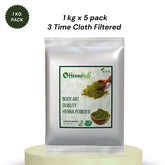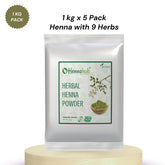Optimizing the Natural Beauty: A Deep Dive into Henna Leaves and Dye Properties
Optimizing the Natural Beauty: A Deep Dive into Henna Leaves and Dye Properties
Introduction
In the realm of natural beauty remedies, few ingredients hold as much allure and mystique as henna. Originating from the leaves of the Lawsonia inermis plant, henna has been cherished for centuries for its dye properties and myriad applications in body art and hair care. In this article, we embark on a journey to explore the captivating nuances of henna leaves and their versatile dye properties.

Unraveling the Mystery: About Henna Leaves and Dye Properties
Henna leaves, harvested from the Lawsonia inermis shrub, boast a rich history spanning millennia. Cultivated primarily in regions with warm climates such as North Africa, South Asia, and the Middle East, these leaves are revered for their natural dyeing capabilities. The intricate chemistry behind henna's dye properties lies in its lawsone molecule, which binds with proteins to impart vibrant hues ranging from reddish-brown to deep burgundy.
Exploring the Chemistry of Henna Dye
Understanding Lawsone: The Key to Henna's Magic
Lawsone, the principal pigment in henna leaves, is responsible for the dyeing process. Upon application and oxidation, lawsone penetrates the outer layer of the skin or hair shaft, creating a semi-permanent bond that results in long-lasting color.

pH Sensitivity: Influencing Color Intensity
The pH level of the medium plays a crucial role in determining the intensity and shade of henna dye. An acidic environment enhances color development, while alkaline conditions yield softer, less pronounced hues. This pH sensitivity underscores the importance of proper preparation and application techniques for optimal results.
Harnessing the Power of Henna: Applications and Benefits
Artistic Expression: Henna Body Art
From intricate bridal designs to cultural celebrations, henna body art holds profound significance in various traditions worldwide. The intricate motifs and patterns crafted using henna paste not only adorn the skin but also symbolize blessings, fertility, and protection.

Natural Hair Care: Conditioning and Coloring
In the realm of hair care, henna serves as a multifaceted solution, offering both aesthetic enhancement and nourishment. As a natural dye, henna imparts rich, glossy tones to the hair while simultaneously strengthening the strands and promoting scalp health.
Answering Your FAQs
-
How long does henna dye last on the skin? Henna body art typically lasts between one to three weeks, depending on factors such as skin type, application technique, and aftercare practices.
-
Can henna be used on sensitive skin? While henna is generally well-tolerated, individuals with sensitive skin should perform a patch test prior to extensive application to mitigate the risk of adverse reactions.
-
Is henna dye permanent on hair? Henna dye gradually fades over time but can persist for several weeks to months, especially with proper care and maintenance.
-
Can henna be mixed with other natural ingredients for hair care? Yes, henna can be combined with various additives such as indigo, amla, or cassia to customize the color and nourishing properties according to individual preferences.
-
Does henna have any medicinal properties? Beyond its cosmetic uses, henna possesses antimicrobial and anti-inflammatory properties, making it a popular remedy for treating minor skin ailments and promoting wound healing.
-
Is black henna safe for use? Black henna, often containing harmful additives such as para-phenylenediamine (PPD), can cause severe allergic reactions and skin damage. It is advisable to steer clear of black henna products and opt for natural, pure formulations instead.
Conclusion
In conclusion, henna leaves and their dye properties epitomize the harmonious blend of tradition, science, and artistry. From adorning the skin with intricate designs to enhancing hair's natural beauty, henna continues to captivate and inspire generations worldwide. Embrace the magic of henna and unlock a world of vibrant colors and timeless elegance.
#hennaleaf #hennadye #lawsone #dyepigment #heenastore #hennahub #hennapowder #henaleaves
















